When you think of an animal with a trunk, an elephant probably comes to mind. But did you know other animals of all kinds also possess trunks? Trunks are handy appendages that can help animals eat, gather food, move objects, and communicate. Check out the nine animals other than elephants that have trunks and learn how they use them in the wild.
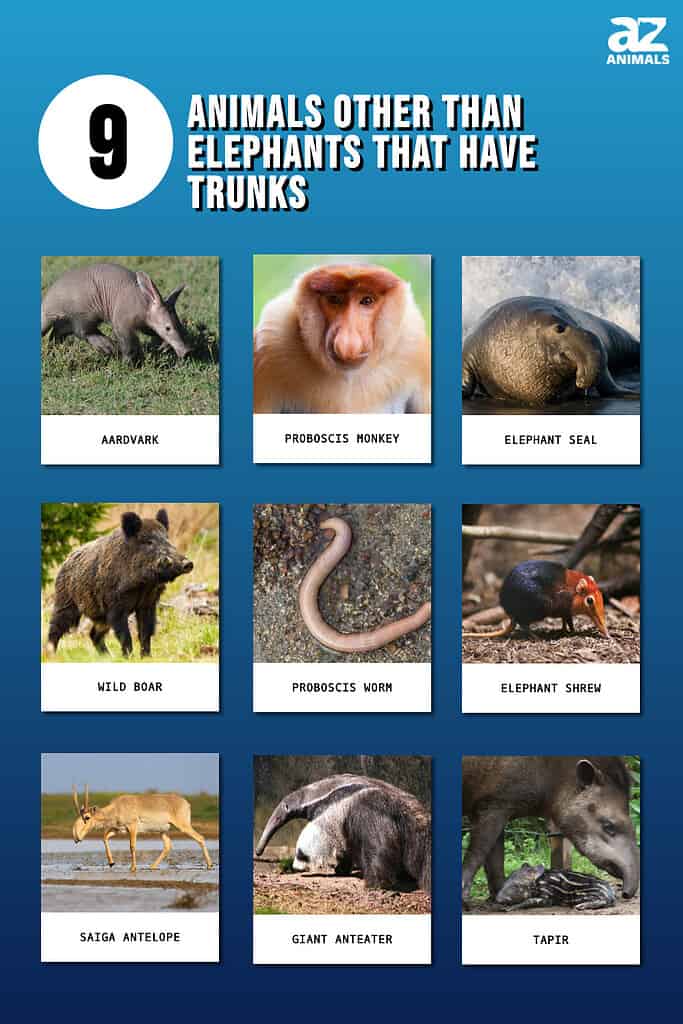
Aardvark
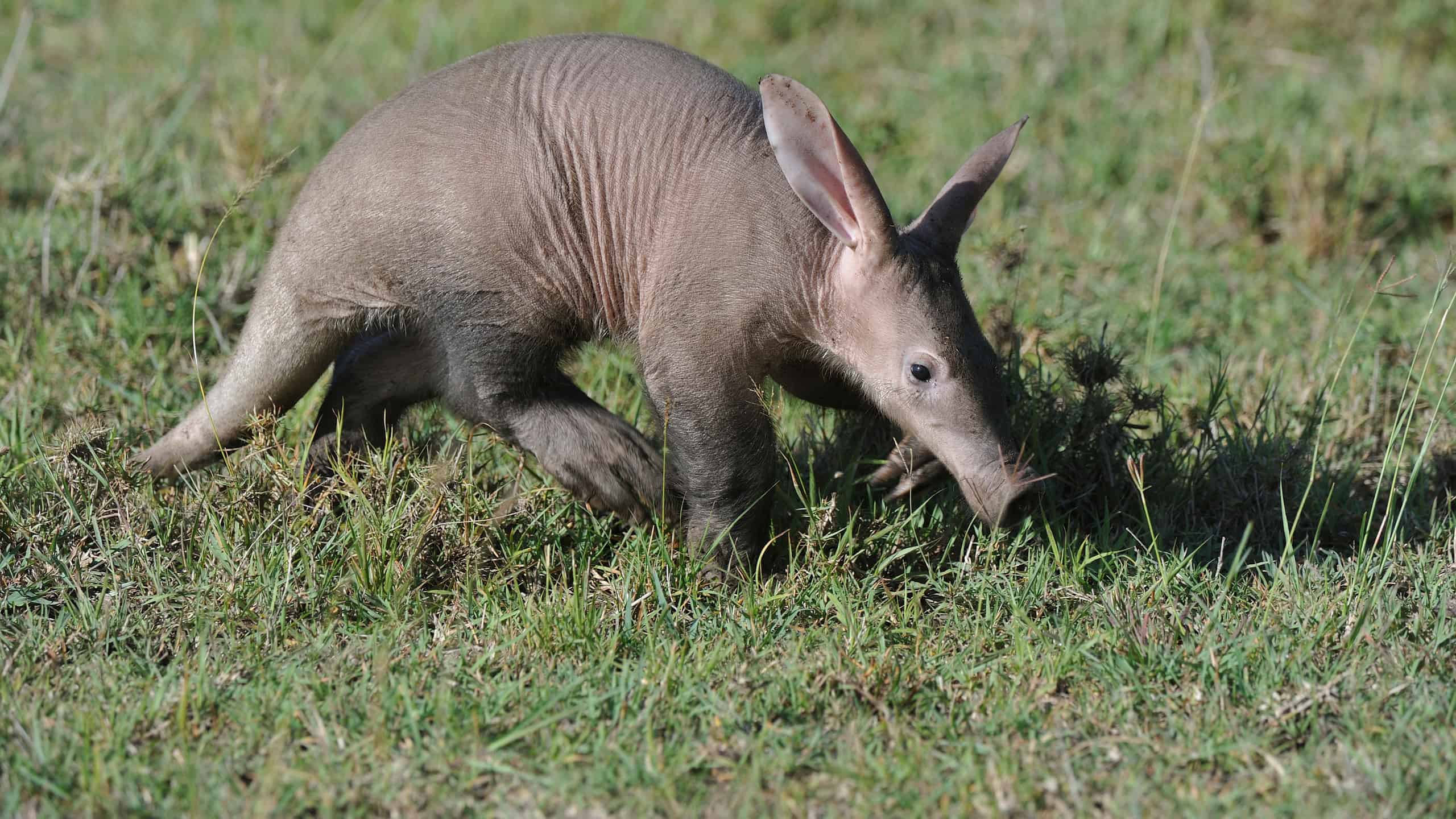
The
aardvark
uses its snout to find food.
©COULANGES/Shutterstock.com
Aardvarks are burrowing mammals native to Africa. It is a rare creature and the only living species of its order. It’s sometimes called the African ant bear, although it is more pig-like than bear-like.
These medium-sized mammals feature a stout body covered in sparse coarse hairs and feature long ears and thick tails. They also have large nails on each toe that appear shovel-like. But its most prominent feature is its long trunk similar to a pig’s. Aardvarks use their snouts to sniff out food, such as ants and termites.
They are also nocturnal and emerge from their burrows in the late afternoon to forage for food, keeping its robust nose to the ground and moving in a zig-zag pattern. These animals live in Sub-Saharan Africa, where they inhabit savannas, grasslands, bushlands, and woodlands.
Proboscis Monkey

Proboscis monkey females choose their mate based on the size of their nose.
©David Evison/Shutterstock.com
The proboscis monkey is an unusual creature with a world-class nose. Endemic to Southeast Asia on the island of Borneo, this species is an Old-World monkey living in coastal areas and mangrove forests.
This reddish-brown primate is one of the largest monkey species in Asia, with males growing larger than females. Both sexes feature bulging stomachs, webbed toes, and long noses, or trunks. However, males have much longer and thicker noses than females. One reason suggests it’s for sexual selection. Females tend to pick males with larger noses as their vocalizations are louder, which females prefer.
The proboscis monkey lives in groups consisting of one adult male, several adult females, and their offspring. However, some all-male groups exist, and some individual males choose to live solo.
Elephant Seal
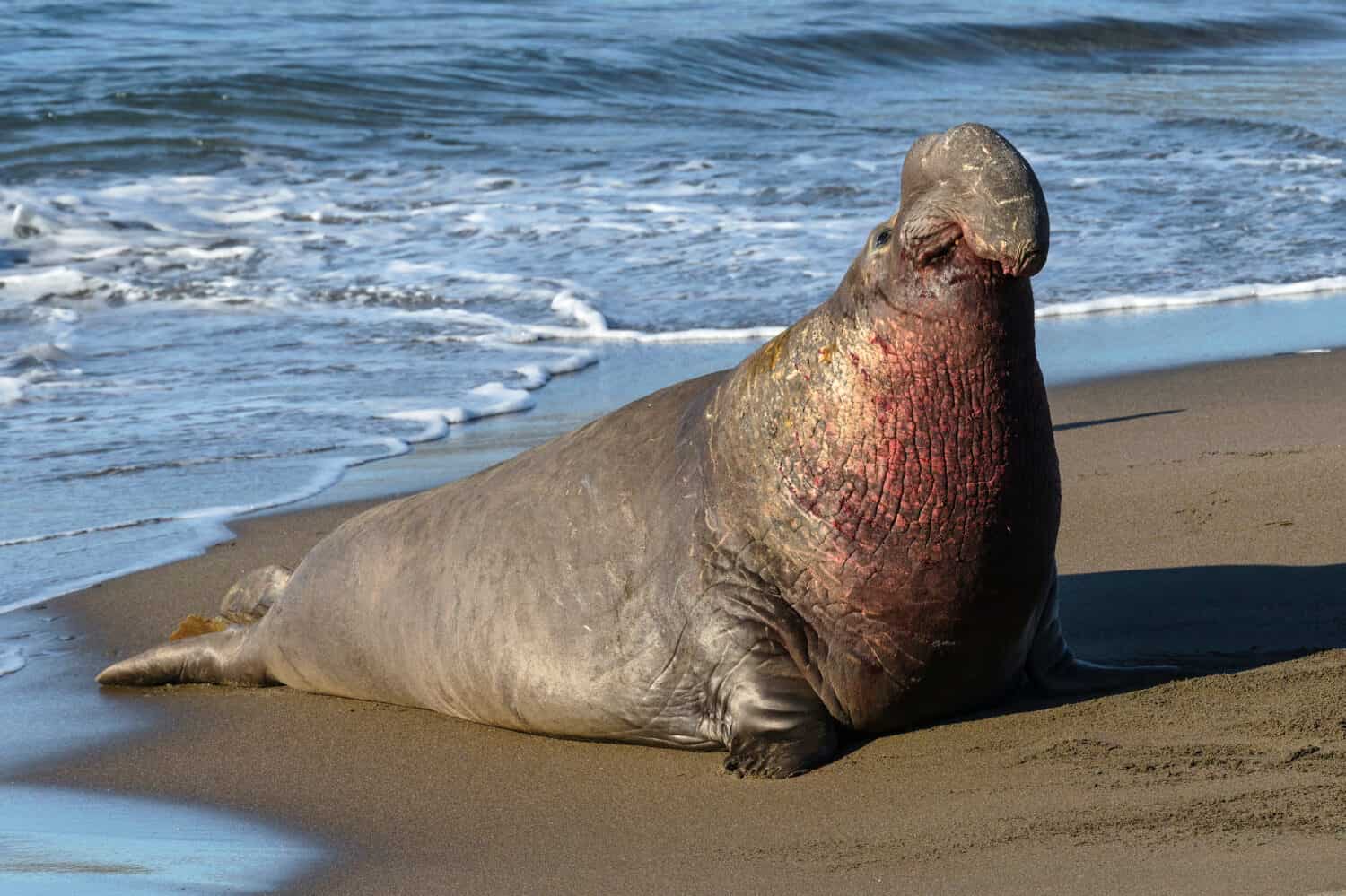
Male
elephant
seals have large trunks that contribute to their loud roaring noises.
©David Osborn/Shutterstock.com
The behemoth elephant seal is a fearless, earless ocean resident that can weigh up to a whopping 11,000 pounds! This remarkable creature was once hunted to the brink of extinction, but its population has since rebounded. Despite its name, the elephant seal is not related to the elephant. Instead, its trunk evolved independently.
These animals feature streamlined bodies that help them move effortlessly in the water. However, their movement on land is a different story. Thankfully, elephant seals spend about 90% of their life underwater, searching for food and covering more than 60 miles of ocean per day.
Adult males feature large trunks, which contribute to their extremely loud vocalizations during mating season. Further, their noses act as a rebreather, which reabsorbs moisture from their exhalations, effectively conserving body moisture. The elephant seal’s proboscis can also be wielded during epic battles of competing males, typically over mating choices.
Wild Boar

The wild boar’s long nose allows it to root around and upturn soil as it searches for food.
©Budimir Jevtic/Shutterstock.com
Known most recently for its invasiveness in the Americas, the wild boar, also known as wild swine, is a suid native to North Africa and Eurasia. After its introduction to other parts of the world, the wild boar is now one of the most abundant and widespread mammals on Earth.
These bulky animals have short legs and thick, elongated snouts. Their massive heads and powerful necks allow them to easily upturn soil, frozen ground, and heavy rocks. Adult males also have well-developed canine teeth that protrude from their mouths.
The wild boar’s long nose allows it to root around and upturn soil, as it searches for food. It also has an excellent sense of smell, detecting food sources from miles away and possible nearby predators.
Proboscis Worm

Proboscis worms use their appendage to capture prey with venom.
©Rattiya Thongdumhyu/Shutterstock.com
Proboscis worms, also known as ribbon worms or Nemertea, are a phylum of worms consisting of 1,300 species. These worms are slim and have varying colors and patterns. At one end of the ribbon worm is its anus, while at the other end is its mouth.
Most have a proboscis that emerges from the mouth when active and lies near the gut when inactive. Proboscis worms use their appendage to capture prey with venom, which it then pulls back in when an attack has ended. However, some species filter feed using suckers at either end.
Depending on the species, these worms can inhabit oceans, freshwater, and even land with cool, damp places. They feed on clams, crustaceans, and annelids.
Elephant Shrew

The
elephant shrew
uses its elongated nose to search for ants, worms, and termites.
These tiny mammals are neither true shrews nor elephants, but they look similar to both. Elephant shrews are native to southern regions of Africa where they are uncommon yet widely distributed. These insectivorous mammals inhabit many environments, from deserts to lush forests.
Along with its elephant-like trunk, they are some of the fastest small creatures in the world, reaching spending up to 18 miles per hour! They resemble rodents and features long snouts, long legs, and scaly tails. Similar to an ant eater, the elephant shrew uses its elongated nose to search for ants, worms, and termites. They can also use it to smell predators, then use their speedy skills to quickly escape.
Similar to an ant eater, the elephant shrew uses its elongated nose to search for ants, worms, and termites.
Saiga Antelope
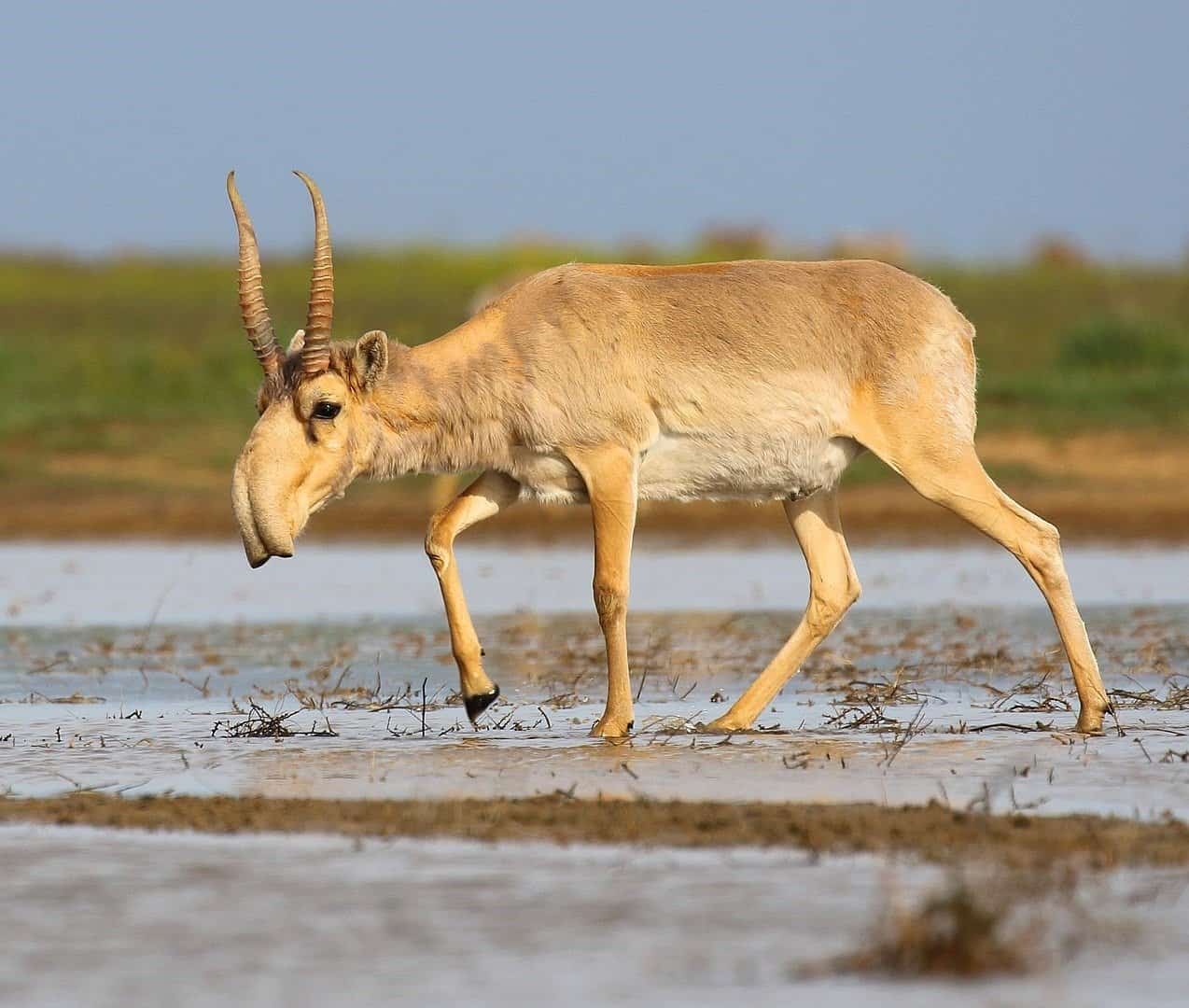
During the summer, the saiga antelope’s nose filters out dust from walking with a herd.
©Andrey Giljov / CC BY-SA 4.0 - License
While the saiga antelope once roamed a widespread region in Eurasia, these antelopes are now mainly found in Russia and Kazakhstan. These unusual-looking creatures are known for their large trunks, which serve several purposes.
During the summer, the saiga antelope’s nose filters out dust from walking with a herd and can also help cool its blood. During the winter, its nose helps to heat air before it goes to the lungs. Males also have thick and slightly translucent horns that can measure up to 15 inches long.
Giant Anteater
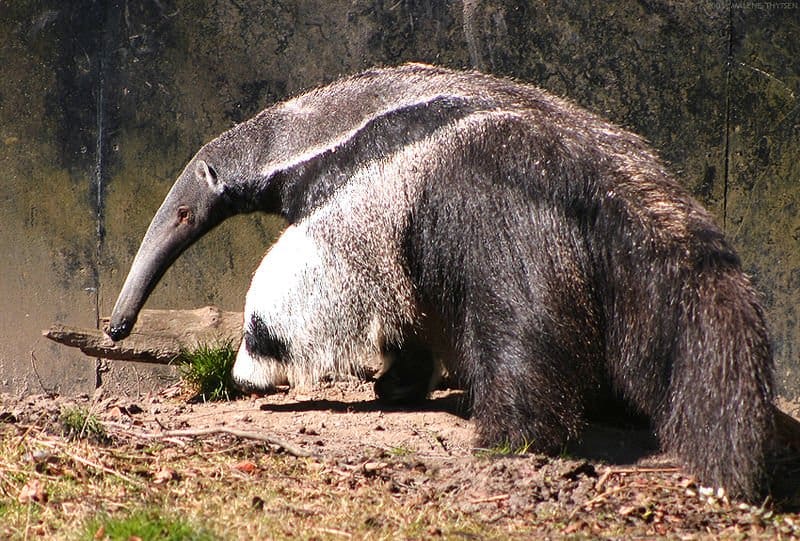
The giant
anteater
has an elongated head and nose perfect for accessing termite mounds.
©Malene Thyssen / Creative Commons - License
The giant anteater is a unique animal with very distinctive features. These insectivorous mammals live in Central and South America, where they can grow to more than seven feet long and weigh over 100 pounds.
Evolved to adapt to their environment, the giant anteater has an elongated head and nose perfect for getting in and out of termite mounds and anthills. Their tongues also extend longer than their snout to reach deep into the earth.
Tapir
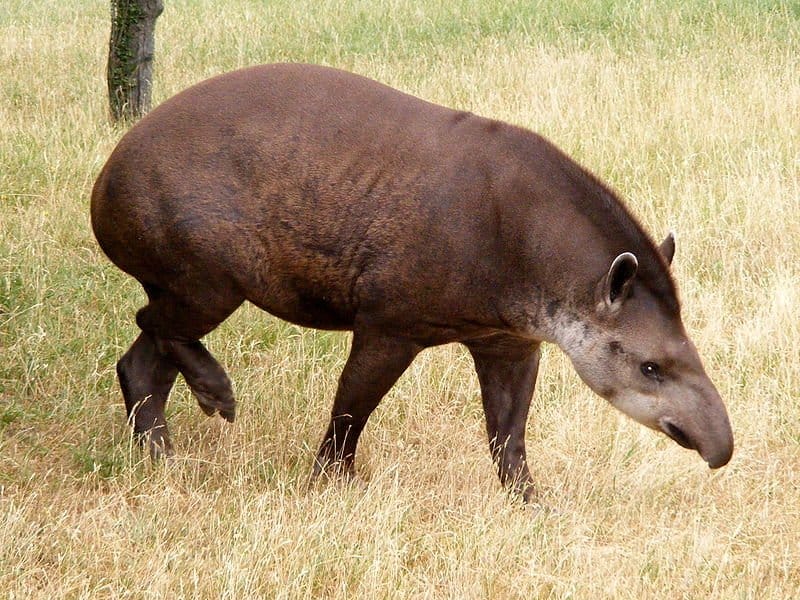
The most prevalent feature of the tapir is its proboscis, which is highly flexible.
Tapirs are large mammals that look similar to pigs. They are native to the forests and jungles of South America, Central America, and Southeast Asia. The most prevalent feature of the tapir is its proboscis, which is highly flexible and can move in every direction. Its trunk allows it to reach foliage in hard-to-reach places, but it also helps them detect scents, such as the presence of other males and females in the area.
| Number | Animals Other Than Elephants That Have Trunks |
|---|---|
| #1 | Aardvark |
| #2 | Proboscis Monkey |
| #3 | Elephant Seal |
| #4 | Wild Boar |
| #5 | Proboscis Worm |
| #6 | Elephant Shrew |
| #7 | Saiga Antelope |
| #8 | Giant Anteater |
| #9 | Tapir |
The photo featured at the top of this post is © Ondrej Prosicky/Shutterstock.com
Thank you for reading! Have some feedback for us? Contact the AZ Animals editorial team.






